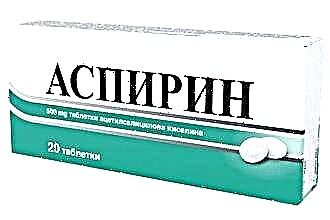Defects are pathologies of the anatomical structures of the heart that affect the normal functioning of the cardiovascular system. Valves, openings between chambers, blood vessels and walls of the heart can be affected by defects.
In the early stages, with timely detection and prescribing supportive treatment, drug therapy is possible, however, with the development of severe symptoms, surgical intervention is indicated to correct the defect. Since the progression of the defect forces the heart to rebuild its work under unfavorable conditions, it is important to carry out treatment as early as possible.
Indications for surgical treatment of heart defects
 Below are the main indications for radical treatment, that is, those situations in which it is impossible not to operate on the patient.
Below are the main indications for radical treatment, that is, those situations in which it is impossible not to operate on the patient.
Coarctation of the aorta:
- Severe coarctation or recoarctation (repeated narrowing of the lumen after primary correction) with long-term current hypertension;
- Aortic stenosis, significantly affecting hemodynamics;
- Pregnancy planning;
Aortic stenosis:
- Severe heart failure;
- Pregnant women and women planning a pregnancy;
- With a systolic pressure gradient above 60 mm Hg;
- 2, 3, 4 stage of defect;
Mitral stenosis:
- Pure or prevalent stenosis stage 2,3,4.
Tricuspid stenosis:
- Severe, symptomatic tricuspid narrowing
- Patients with TS undergoing surgery on the valves of the left heart.
Pulmonary artery stenosis:

- Dysplasia or calcification of the valve leaflets;
- Significant regurgitation.
Atrial septal defect:
- Severe blood shunting from left to right;
- Development of right ventricular failure;
- Recurrent lung infections;
- Supraventricular tachyarrhythmias.
Ventricular septal defect:
- Big defect
- Absence of severe obstructive pulmonary pathology
Surgical techniques for various defects
Coarctation of the aorta:
- Balloon angioplasty;
- Stenting;
- Aortic plastic surgery with synthetic materials.

Aortic stenosis:
- Valvuloplasty;
- Prosthetics;
- Transcatheter aortic valve replacement.
Mitral stenosis:
- Percutaneous balloon commissurotomy;
- Prosthetics.
Tricuspid stenosis:
- Percutaneous balloon valvuloplasty;
- Prosthetics;
- Commissurotomy.
Ventricular septal defect:
- Cardiac catheterization;
- Open surgery to replace the defect;
Atrial septal defect:
- Cardiac catheterization with the installation of a special patch;
- Open intervention with connecting the patient to a heart-lung machine.
In severe cases, in the presence of combined pathology, for example, dilated cardiomyopathy, only a heart transplant can solve the problem of the defect.
At the moment, the development of devices that perform the function of a blood pump is being actively pursued.
Sometimes, according to the results of the examination and the patient's condition, surgical interventions to correct the defect may be ineffective, or even threaten the patient's life. In this case, a set of measures is being developed to provide palliative therapy.
Possible complications
Coarctation of the aorta:
- Formation of an aneurysm;
- Hoarseness due to possible intraoperative damage to the recurrent laryngeal nerve (anatomically associated with the aorta);
- Diaphragm paralysis, which is caused by damage to the phrenic nerve;
- Chylothorax (accumulation of lymph in the pleural cavity when the thoracic lymphatic duct is damaged;
- Postcoarctotomy syndrome is a unique problem that arises in the early postoperative period. Associated with an increase in blood flow into the vessels of the abdominal cavity, it is manifested by abdominal pain and vomiting.
Aortic stenosis:
- Hematoma at the site of insertion of the catheter into the femoral artery;
- Arrhythmias;
- Immune reactions during valve implantation of biological origin;
- Endocarditis;
- Hemolytic reactions in case of need for blood transfusion.
 Mitral stenosis:
Mitral stenosis:
- Damage to the heart by a catheter;
- Deformation of the valve leaflets due to balloon commissurotomy;
- Embolism of cerebral vessels with valve elements, calcifications.
Tricuspid stenosis
- Thrombotic events;
- Postoperative heart rhythm disturbances;
- Endocarditis;
- A mechanical valve can cause destruction of red blood cells, resulting in anemia and hemolytic jaundice.
Ventricular and interatrial septal defect:
- Infectious complications from the site of the catheter placement;
- Hematoma of the soft tissues of the thigh;
- Allergic reaction to X-ray contrast agent;
- Rejection of the material that was used to cover the defect;
- Catheter damage to a large vessel;
- Complications associated with thoracotomy (chest incision), such as postoperative wound infection, suture dehiscence, pain syndrome;
Features of the rehabilitation process
Coarctation of the aorta:
- After surgery, all power loads are contraindicated, since there is a risk of aortic dissection;
- The patient should be under the supervision of a cardiologist;
- After correction of the defect, it is necessary to conduct an MRI or angiography to monitor the effectiveness of treatment;
- Active therapeutic measures should be taken in relation to comorbidities, especially chronic heart failure, hypertension, and coronary artery disease.
 Aortic stenosis:
Aortic stenosis:
- Control examinations by a cardiologist twice a year with ECG and ECHO-KG recording;
- Patients with installed mechanical valves should receive anticoagulant therapy with warfarin for life and undergo regular monitoring of the coagulogram.
Mitral stenosis:
- Annual echocardiography and ECG;
- Anticoagulant therapy for patients with transplanted valves;
- Therapy of concomitant diseases.
Tricuspid stenosis:
- Life-long anticoagulant therapy with coagulation control;
- Prescribing antiarrhythmic drugs in case of heart rhythm disturbances;
- Valve implantation of biological origin (cadaveric or porcine) may require repetition of the operation due to the wear and tear of this type of implant.
Regardless of the type of surgery, every cardiac patient needs to reconsider his lifestyle and make some changes to it, such as:
- Refusal of alcohol;
- Smoking cessation;
- Reducing the intake of table salt;
- Replacement of animal fats with vegetable fats;
- Physical activity, taking into account the functionality of the heart and blood vessels;
- Prevention of infectious diseases (timely vaccination).
Intervention cost
How much does an operation to correct a defect in the heart muscle cost - a question that interests every patient with this pathology. At this point in time, the cost of the procedure is quite high. Most of this is due to the high cost of the prosthesis or the complex technique of the procedure. Often the reason for the high price can be the use of certain equipment during the intervention.
Conclusions
At the moment, many effective methods for correcting heart defects have been developed, which can be performed in cardiological centers. Normalization of physiological blood flow significantly improves the prognosis for the patient's health and life. Despite the fact that the surgical correction of the defect does not end with the treatment (often requires lifelong anticoagulant therapy and regular medical examinations), a timely operation for a defect is worth a high-quality and full life.



